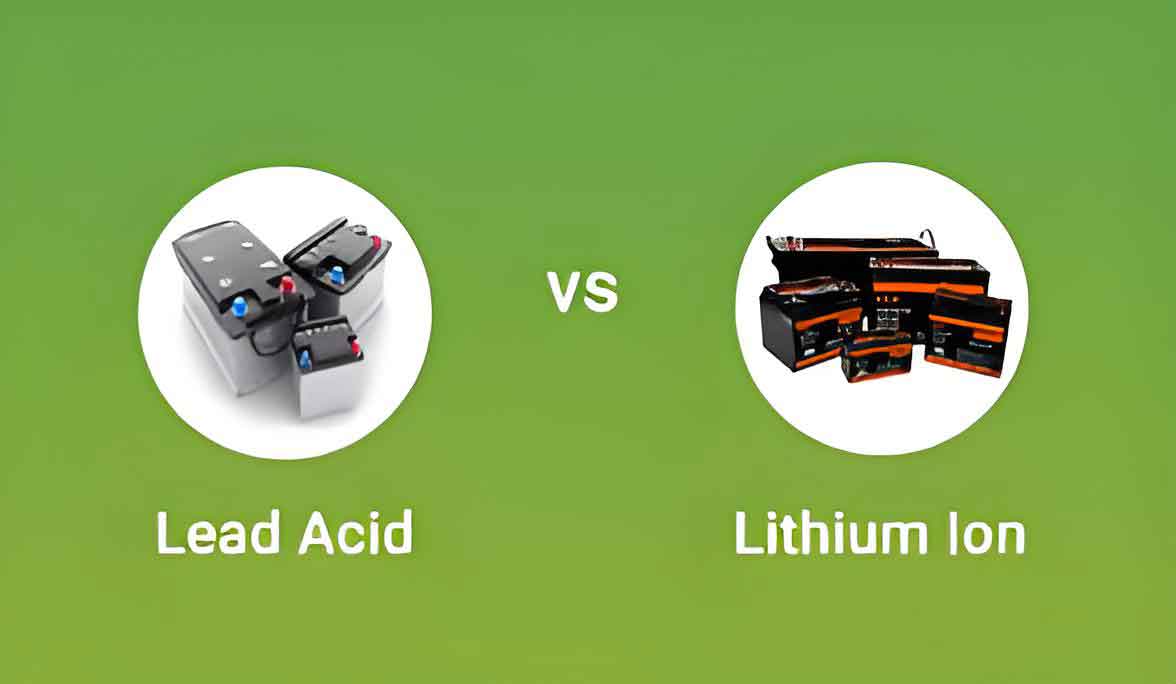The choice of battery technology is a critical factor in the performance and efficiency of solar battery systems. Among the various options available, lead-acid and lithium-ion batteries are the most commonly used in solar battery system applications. This article provides a comprehensive comparison between lead-acid and lithium-ion batteries, examining their characteristics, advantages, disadvantages, and suitability for different solar battery system applications.

Introduction
Solar battery systems rely on efficient and reliable energy storage solutions to maximize the use of solar power. Lead-acid and lithium-ion batteries have distinct properties that make them suitable for various applications. Understanding the differences between these two types of batteries is essential for making an informed decision when selecting a battery for a solar battery system.
Lead-Acid Batteries
Overview
Lead-acid batteries are one of the oldest types of rechargeable batteries and have been used in various applications for over a century. They are known for their reliability, durability, and relatively low cost.
Advantages
- Cost-Effective: Lead-acid batteries are generally cheaper to produce and purchase compared to lithium-ion batteries.
- Proven Technology: With a long history of use, lead-acid batteries are well-understood and have established manufacturing processes.
- Recyclability: Lead-acid batteries are highly recyclable, reducing environmental impact.
Disadvantages
- Shorter Lifespan: Lead-acid batteries have a shorter lifespan compared to lithium-ion batteries, typically lasting between 3 to 5 years.
- Lower Energy Density: Lead-acid batteries have a lower energy density, meaning they store less energy for a given weight and size.
- Maintenance Requirements: Lead-acid batteries require regular maintenance to ensure proper functioning and longevity.
Lead-Acid Battery Characteristics Table
| Characteristic | Lead-Acid Battery |
|---|---|
| Cost | Lower |
| Lifespan | 3-5 years |
| Energy Density | Lower |
| Maintenance | Regular maintenance required |
| Recyclability | High |
Lithium-Ion Batteries
Overview
Lithium-ion batteries are a more recent development in battery technology and have gained popularity due to their high energy density and long lifespan. They are commonly used in a variety of applications, including consumer electronics, electric vehicles, and solar battery systems.
Advantages
- Longer Lifespan: Lithium-ion batteries typically last between 10 to 15 years, making them a long-term investment.
- Higher Energy Density: Lithium-ion batteries can store more energy for a given weight and size compared to lead-acid batteries.
- Low Maintenance: Lithium-ion batteries require little to no maintenance, making them convenient for users.
Disadvantages
- Higher Cost: Lithium-ion batteries are generally more expensive than lead-acid batteries, both in terms of initial investment and replacement costs.
- Thermal Sensitivity: Lithium-ion batteries are more sensitive to high temperatures, which can affect their performance and lifespan.
- Recycling Challenges: While recyclable, lithium-ion batteries are more complex to recycle compared to lead-acid batteries.
Lithium-Ion Battery Characteristics Table
| Characteristic | Lithium-Ion Battery |
|---|---|
| Cost | Higher |
| Lifespan | 10-15 years |
| Energy Density | Higher |
| Maintenance | Low maintenance required |
| Recyclability | More complex |
Comparison of Lead-Acid and Lithium-Ion Batteries
Cost Considerations
- Initial Investment: Lead-acid batteries have a lower upfront cost, making them more accessible for budget-conscious users.
- Total Cost of Ownership: While lithium-ion batteries have a higher initial cost, their longer lifespan and lower maintenance requirements can result in a lower total cost of ownership over time.
Performance
- Energy Density: Lithium-ion batteries offer higher energy density, providing more storage capacity in a smaller and lighter package.
- Lifespan: Lithium-ion batteries typically have a longer lifespan, reducing the frequency and cost of replacements.
Maintenance
- Lead-Acid Batteries: Require regular maintenance, including checking water levels and cleaning terminals to prevent corrosion.
- Lithium-Ion Batteries: Require minimal maintenance, making them more convenient for users who prefer a low-maintenance option.
Environmental Impact
- Lead-Acid Batteries: Highly recyclable, reducing their environmental impact at the end of their life cycle.
- Lithium-Ion Batteries: More complex to recycle, but advancements are being made to improve recycling processes and reduce environmental impact.
Suitability for Solar Battery Systems
- Residential Applications: Lithium-ion batteries are often preferred for residential solar battery systems due to their higher energy density, longer lifespan, and low maintenance requirements.
- Commercial Applications: Both lead-acid and lithium-ion batteries can be suitable, depending on the specific needs and budget of the business. Lithium-ion batteries are ideal for businesses looking for long-term, high-performance solutions, while lead-acid batteries may be suitable for cost-sensitive projects.
- Off-Grid Applications: Lithium-ion batteries are favored for off-grid solar battery systems due to their reliability and efficiency in storing and delivering energy over extended periods.
Suitability Table for Solar Battery Systems
| Application | Lead-Acid Battery | Lithium-Ion Battery |
|---|---|---|
| Residential | Possible, but less common | Preferred |
| Commercial | Suitable for cost-sensitive | Ideal for high performance |
| Off-Grid | Less ideal | Preferred |
Conclusion
In conclusion, the choice between lead-acid and lithium-ion batteries for solar battery systems depends on various factors, including budget, performance requirements, maintenance preferences, and environmental considerations. Lead-acid batteries offer a cost-effective and proven solution with high recyclability but require regular maintenance and have a shorter lifespan. On the other hand, lithium-ion batteries provide superior energy density, longer lifespan, and low maintenance, making them a preferred choice for many modern solar battery system applications despite their higher initial cost.
Ultimately, understanding the specific needs and goals of the solar battery system application will guide the decision-making process and ensure the selection of the most appropriate battery technology. As technology continues to evolve, both lead-acid and lithium-ion batteries will likely see improvements, further enhancing their suitability for various energy storage needs.
